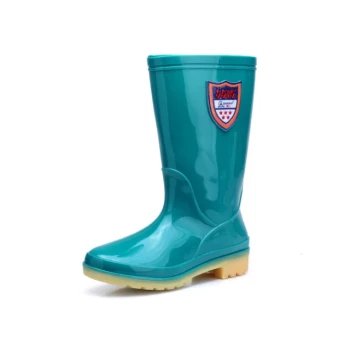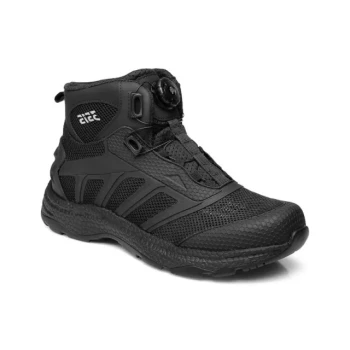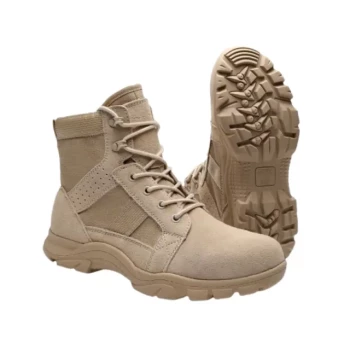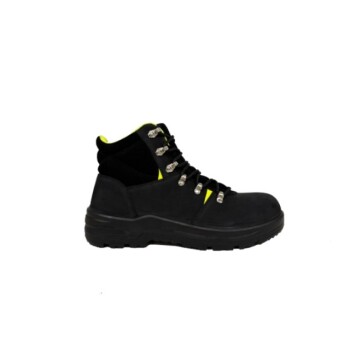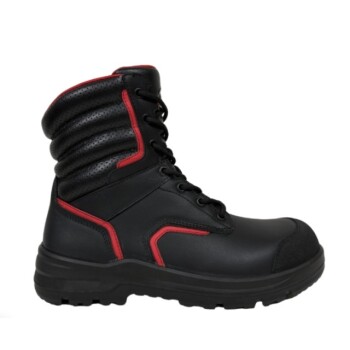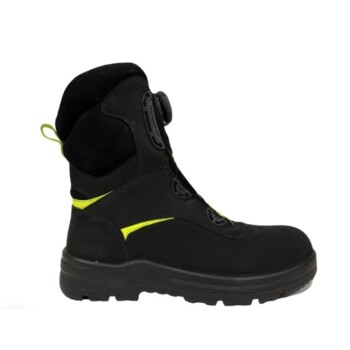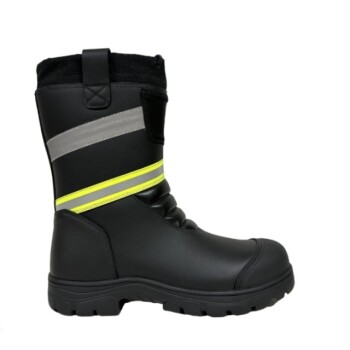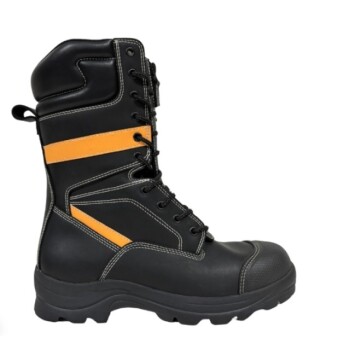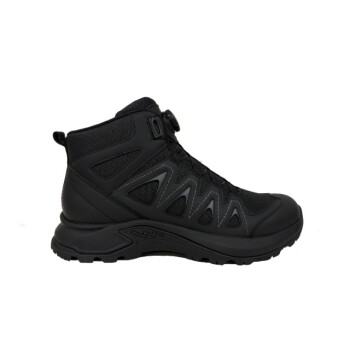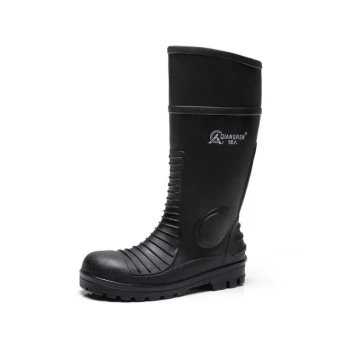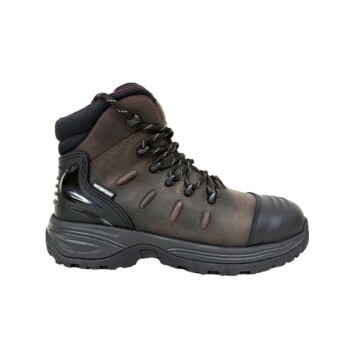In short, their effectiveness is severely compromised. In very cold, sub-freezing conditions, waterproof breathable (WPB) materials like Gore-Tex offer little to no advantage over simpler, non-breathable waterproof fabrics. The physics of condensation and freezing effectively negate the "breathable" function you paid for.
The core problem is that the temperature gradient across the fabric causes your sweat vapor to condense and freeze inside the material, clogging the microscopic pores and turning your high-tech shell into the equivalent of a plastic bag.

The Physics of Breathability in the Cold
To understand why these materials fail, you first have to understand how they are designed to succeed. The entire concept hinges on moving water vapor from a warm, humid environment to a cool, dry one.
How Breathable Fabrics Are Supposed to Work
Waterproof breathable membranes work by being hydrophobic (repelling liquid water) and microporous (having pores large enough for water vapor to pass through but too small for liquid water droplets).
This process relies on a vapor pressure differential. The warm, moist air created by your body heat and sweat has a higher pressure than the typically colder, drier air outside, driving the moisture vapor through the membrane.
The Point of Failure: The Dew Point
The critical factor in sub-freezing conditions is the dew point—the temperature at which air becomes saturated with water vapor and it condenses into liquid.
In a cold-weather layering system, this dew point is often reached within the layers of your clothing, specifically somewhere inside your outer shell jacket.
Condensation and Freezing Clog the System
As your warm, moist sweat vapor travels outward, it hits this dew point line inside your WPB shell. It instantly condenses into liquid water on the inside of the fabric.
Because the fabric temperature is below 32°F (0°C), this condensed liquid water then freezes, coating the inner membrane with a fine layer of ice. This ice effectively blocks the micropores, shutting down all breathability.
Understanding the Practical Implications
Once the fabric's breathability is neutralized by ice, its primary function becomes simple waterproofing and windproofing, just like a basic coated nylon shell.
Your Jacket Becomes a Vapor Barrier
With its pores clogged, your expensive WPB shell now traps nearly all of your sweat vapor. The jacket can no longer help manage your moisture; it simply contains it.
This significantly increases the risk of your insulating mid-layers getting damp, which causes them to lose their insulating properties and dramatically accelerates heat loss.
The Real Goal: Managing Your Inner Climate
This highlights a critical principle of cold-weather clothing: you cannot rely on a single fabric to solve moisture management.
The focus must shift to regulating your temperature and sweat production through smart layering and active venting (using pit zips, the main zipper, and cuffs) to dump heat and moisture before it saturates your clothing system.
The Trade-offs: WPB vs. Alternatives
In very cold and dry environments (where precipitation is snow, not rain), a waterproof shell is often the wrong tool for the job during high-exertion activities.
When a WPB Shell is Still Relevant
A WPB shell remains essential if you expect wet precipitation or will be in direct, prolonged contact with melting snow. Its ability to keep external moisture out is undeniable. However, you must manage internal moisture mechanically through venting.
The Superiority of Softshells and Windshirts
For most active use in dry-cold conditions, a non-waterproof but highly wind-resistant and extremely breathable layer like a softshell or windshirt is far more effective.
These materials prioritize breathability above all else, allowing sweat vapor to escape easily and keeping your insulation dry from the inside. They can handle dry snow, and their performance doesn't depend on a fragile vapor pressure differential.
Making the Right Choice for Your Activity
Your decision should be based on the expected conditions and your activity level, not on the marketing claims of a specific fabric technology.
- If your primary focus is high-output activity (ski touring, ice climbing): Opt for a highly breathable softshell or windshirt and manage your layers to minimize sweating. Pack a hardshell only for emergencies or severe weather.
- If your primary focus is lower-output activity or resort use: A WPB shell works well as a protective barrier against wind and snow, but manage internal moisture by opening vents or removing layers when you start to feel warm.
- If your primary focus is safety in extreme, variable conditions (mountaineering): A WPB hardshell is a critical piece of safety equipment, but its breathability is the least important feature. Its value comes from being a reliable windproof and waterproof shield; active venting is your primary tool for moisture management.
Ultimately, you must manage your entire clothing system—the fabric is just one component.
Summary Table:
| Scenario | WPB Material Performance | Better Alternative |
|---|---|---|
| High-output activity (ski touring) | Breathability fails due to internal freezing | Highly breathable softshell or windshirt |
| Low-output activity (resort use) | Works as a wind/snow barrier if vents are used | Layer management with WPB as outer shell |
| Extreme, variable conditions | Critical for waterproofing but breathability is neutralized | WPB hardshell + active venting for safety |
Need Reliable Footwear for Extreme Conditions? Partner with 3515 Factory!
As a large-scale manufacturer, 3515 produces a comprehensive range of waterproof, insulated, and breathable footwear for distributors, brand owners, and bulk clients. Our production capabilities encompass all types of boots and shoes designed to perform in challenging environments. Let us help you develop the perfect footwear solution for your customers' cold-weather needs.
Contact us today to discuss your manufacturing requirements!
Visual Guide
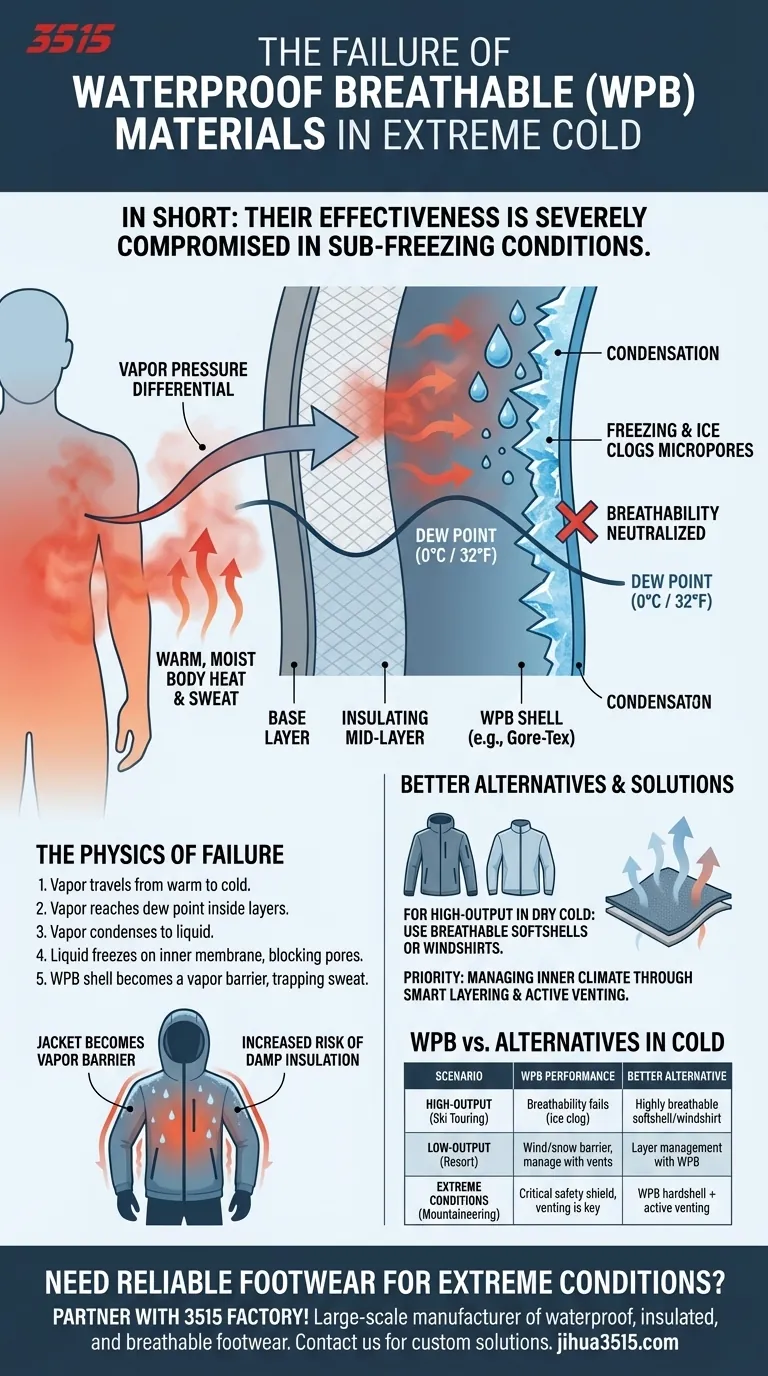
Related Products
- Wholesale Waterproof Tactical Boots Custom Suede & High-Traction Soles
- Factory Direct Wholesale Rain Boots Durable Waterproof & Fully Customizable
- Lightweight Breathable Sneakers with Wet-Traction Grip for Wholesale & Private Label
- Wholesale Lightweight Tactical Boots with Dial Closure OEM & Bulk Orders
- Wholesale Lightweight Tactical Boots Custom Manufacturer for Desert & Combat Use
People Also Ask
- What is the significance of waterproof functionality in tactical boots? Essential for Health & Performance
- Why is waterproofing important for tactical boots? Protect Your Feet and Gear in Any Mission
- Are military camouflage boots waterproof? How to Choose Boots That Keep Feet Dry
- How do military camouflage boots protect against adverse weather? Ensuring Dry, Warm Feet in Any Condition
- What are the advantages and disadvantages of waterproof tactical boots? A Guide to the Key Trade-Offs

